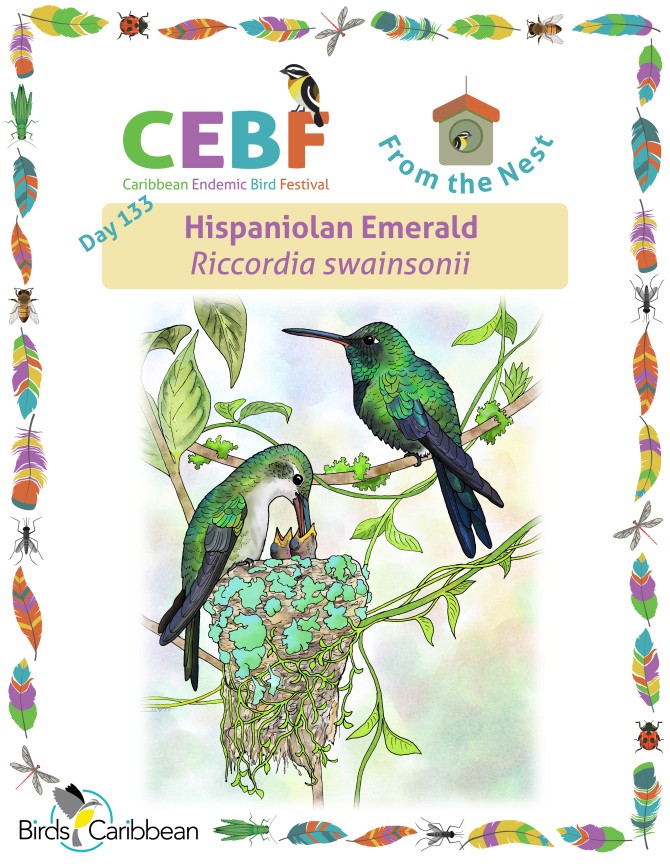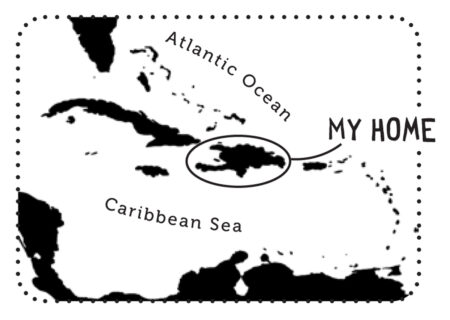Celebrate the Caribbean Endemic Bird Festival (CEBF) with us! Our theme in 2024 is “Protect Insects, Protect Birds”—highlighting the importance of protecting insects for birds and our environment. Have fun learning about a new endemic bird every day. We have colouring pages, puzzles, activities, and more. Download for free and enjoy learning about and celebrating nature!
Endemic Bird of the Day: Hispaniolan Emerald
See them sparkle. See them shine. These birds are looking mighty fine. Both in name and in plumage, the Hispaniolan Emerald is a literal gem of a bird!
True to their name, both males and females boast glittering green feathers. Females have a bronzy glint to their green and can be distinguished from males by their pale white chest and throat. Males have a dark chest and a green gorget (throat patch) which shimmers brilliantly when awash with light. Look for the little white spot behind their eyes which gives them an extra cute face!
How does the emerald stand out from Hispaniola’s other hummers? Fortunately there are only three other resident hummers to tell it apart from. The first key is habitat. The Hispaniolan Emerald prefers higher elevation montane tropical forests. Usually they won’t be found below 200m, but can be found as high as 1,500m! The higher into Hispaniola’s mountains you venture, the more emeralds you’re likely to see. Listen for their sharp metallic chipping notes next time you go for a mountain hike in Hispaniola.
The second clue is to look at their bill and tail shape. The Hispaniolan Emerald has a straight bill, unlike the decurved bill of the Hispaniolan Mango. If you catch it in a bit of sun, you might even see that the lower bill is actually red. Next check the tail shape—emeralds have a dark forked tail, whereas the Hispaniolan Mango has a rounded tail with orange-purple feathers.
The Hispaniolan Emerald is also perfectly sized in between the teeny tiny Vervain Hummingbird and the larger Hispaniolan Mango. This has given it one of its local names—Zumbador Mediana. It is also referred to as Zumbador Esmerelda or Zumbador Verde in the Dominican Republic. In Haiti, they’re known as Wanga-nègès mòn.
Although emeralds themselves are not a Caribbean specialty, our Caribbean emeralds are unique! Most other emerald hummingbirds in the neotropics are in the genus Chlorostilbon. While Caribbean emeralds had formerly been classified as such, recent molecular studies have shown that they are distinct! As such, Caribbean emeralds were placed in the recently resurrected genus, Riccordia, named to honor French surgeon-naturalist Alexandre Riccord. This genus now contains all Caribbean endemic emeralds including the Puerto Rican Emerald, the Cuban Emerald, the Blue-headed Hummingbird, and of course our featured Hispaniolan Emerald. It also includes the extinct Brace’s Emerald, formerly of Grand Bahama.
These hummingbirds are trap-liners, which means that they usually have a preferred flower route. They love common Caribbean flowers like Inga, Heliconia, and Hibiscus. They are also quite adept at snatching insects in the air when they need a little of that extra protein boost!
Like other hummingbirds, the female does all of the work when it comes to nest-building, weaving together a cozy cup of moss and ferns, lining it with lichens, and tying it all together with a bit of spiderweb. She lays two white tic-tac size eggs which usually hatch after a little over two weeks of incubation and fledge about 20 days later.
While Hispaniolan Emeralds are still a common sight around much of the Hispaniolan highlands, they are losing much of their habitat to deforestation, especially in the Haitian mountains, though they persist in La Visite National Park and Pic Macaya Biosphere Reserve.
You can get the opportunity to see these sparkling gems for yourself this summer at our annual conference in Santo Domingo! Be sure to sign up for a trip to Ebano Verde Scientific Reserve or get yourself into the mountains for a good chance to see the Hispaniolan Emerald!
Learn more about this species, including its range, photos, and calls here. Great news! If you’re in the Caribbean, thanks to BirdsCaribbean, you have free access to Birds of the World and you can find out even more in the full species account of this bird!
Thanks to Arnaldo Toledo for the illustration and Holly Garrod for the text!
Colour in the Hispaniolan Emerald
Download our West Indies Endemic Bird colouring page. Use the photos below as your guide, or you can look up pictures of the bird online or in a bird field guide if you have one. Share your coloured-in page with us by posting it online and tagging us @BirdsCaribbean #CEBFfromthenest
Listen to the calls of Hispaniolan Emerald
The call of the Hispaniolan Emerald is a sharp “tic” often repeated in a series.
Puzzle of the Day
Click on the image below to do the puzzle. You can make the puzzle as easy or as hard as you like – for example, 6, 8, or 12 pieces for young children, all the way up to 1,024 pieces for those that are up for a challenge!
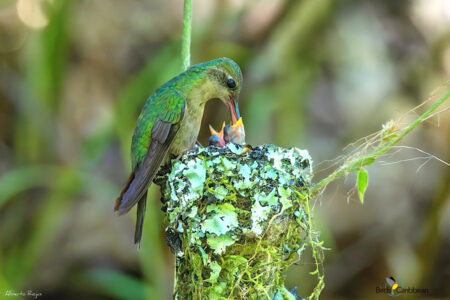
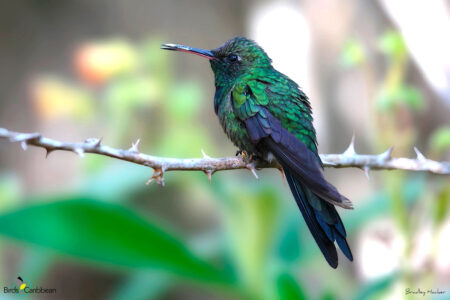
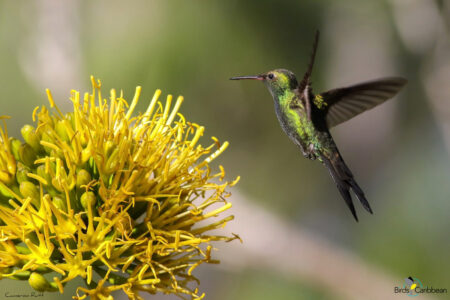
Activity of the Day
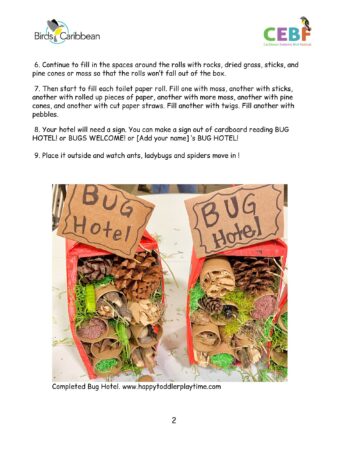 FOR KIDS AND ADULTS: Our 2024 Caribbean Endemic Bird Festive theme is “Protect Insects, Protect Birds”. What better way to help protect insects than by giving them somewhere to live? In today’s activity you’ll be making a bug hotel. Bug hotels are a great addition to your garden, back yard, or community space. They attract and protect bugs that keep your plants healthy. And don’t forget what is good for bugs is good for birds!
FOR KIDS AND ADULTS: Our 2024 Caribbean Endemic Bird Festive theme is “Protect Insects, Protect Birds”. What better way to help protect insects than by giving them somewhere to live? In today’s activity you’ll be making a bug hotel. Bug hotels are a great addition to your garden, back yard, or community space. They attract and protect bugs that keep your plants healthy. And don’t forget what is good for bugs is good for birds!
For this activity you will need:
- Toilet paper rolls
- Milk Carton
- Acrylic paint
- Large straws or rolled up pieces of paper
- Natural materials for bugs to hide in e.g. moss, dried grass, pinecones, twigs, leaves
- Stones
- Rolled paper
- Craft knife (optional)
- Black dot stickers or black paint
Just download our handy instructions and get started. Note that this for this activity you will need a parent or trusted adult to help you!
Enjoy this video of a Hispaniolan Emerald in the wild!

